The old-school Pluto Water experience, when guests used sticks attached to glasses to dip the water directly from the springs
That smell. What *is* that smell?
You might have asked that question the first time you visited French Lick Resort. That unmistakable scent comes and goes, but you’re most likely to notice it at certain places (like the gardens, parking garage and pool areas at French Lick Springs Hotel), or on certain days (the warm and humid ones especially.)
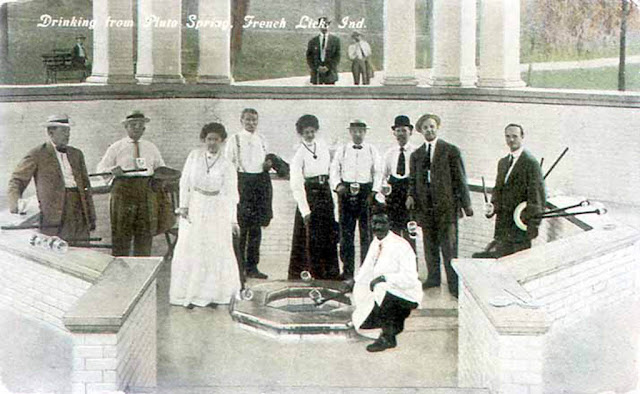
If you knew the right person to ask “what is that smell?”, they told you it was Pluto Water. That sulphur-tinged mineral water has been flowing through this area for hundreds of years. And hey, at least you only have to get a noseful of it every now and then. You’re not even getting the immersive Pluto Water treatment like guests did in the early 1900s when they visited French Lick to bathe in and drink the stuff.
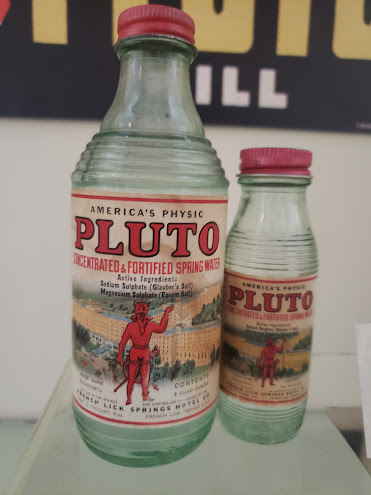
It had oodles of healing powers, was the word. Taking a bath in it could soothe anxiety. Drinking it could help rid you of everything from acne to diabetes and practically everything in between. The waters were a primary reason two hotels were first established at French Lick and West Baden in 1845 and 1855, respectively. And with a nod to some of the hotel’s promotional materials from more than 100 years ago, we can give a science-y sort of explanation about what’s exactly in that water.
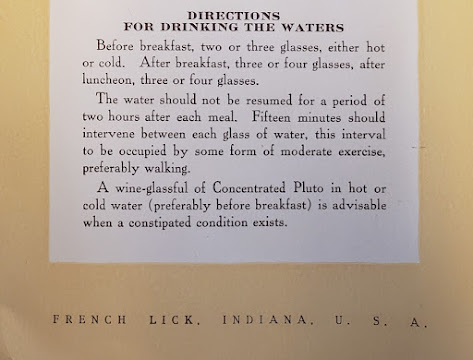
This is a hotel pamphlet from the 1910s that touts the hotel’s range of amenities, including Pluto Water. Thomas Taggart, who took ownership of the hotel in 1902, realized that the medical profession scoffed at some of the outlandish claims regarding mineral water. So he took a different tack with his marketing.
Instead of focusing on the ailments the waters might cure, he paid for studies that provided guests with the elements contained in the water. This pamphlet contains an analysis of the water, completed in 1913 by a professor of physical chemistry at the University of Missouri. Here’s what is says is in the water:
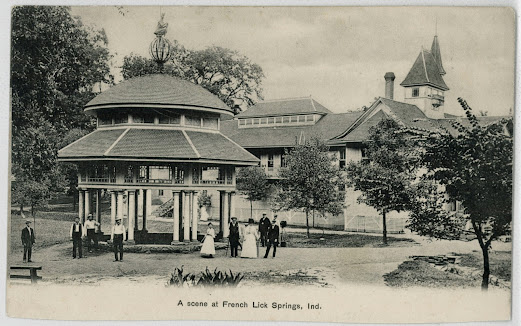
Pluto Spring Water
• Sodium chloride (1,995 parts per million)
• Calcium sulphate (1,709)
• Sodium sulphate (680)
• Magnesium carbonate (559)
• Magnesium sulphate (344)
• Silica (24)
• Iron and aluminum (trace)
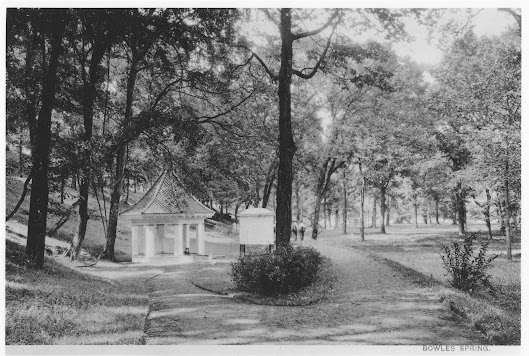
Bowles Spring Water
• Sodium chloride (1,518 parts per million)
• Calcium sulphate (1,440)
• Sodium sulphate (645)
• Magnesium carbonate (453)
• Magnesium sulphate (317)
• Silica (12)
• Iron and aluminum (1)
As the pamphlet states: “They contain largely the same elements, although in varying strength, being of the sulpho-saline alkaline class, and combining the therapeutic effects of the carbonates, the sulphates, the chlorides, and sulphurated hydrogen. … There was no disease producing bacteria and no evidence of sewage contamination. The waters were excellent from a sanitary standpoint.”
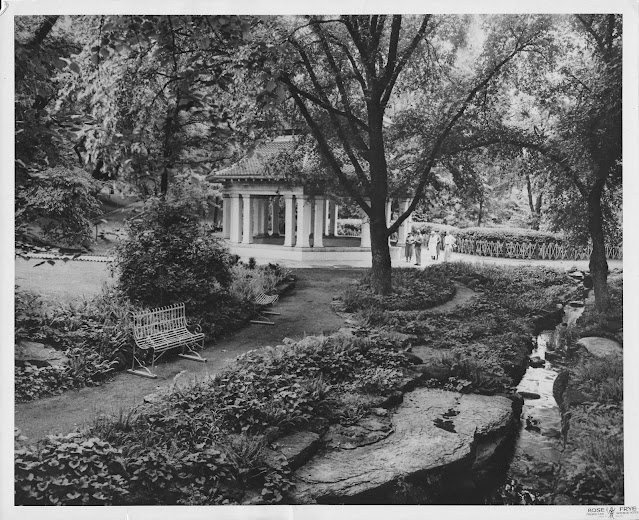
It was a lot of fancy wording for what was, ostensibly, the same water at both springs. Pluto and Bowles springs were located just a few hundred feet from each other, both along the same walking path outside the hotel. French Lick Creek, which runs south to north — opposite of the usual north-to-south flow as it follows the elevation which slopes from high to low — was the source of both mineral springs.
But Taggart made a killing off the water by building a Pluto Water bottling plant on property, and convincing physicians and pharmacies to carry the bottled product nationwide. At times, smelly water was a bigger money-maker than Taggart’s hotel business: French Lick Springs Hotel brought in $276,000 for Taggart in 1912, while Pluto Water sales surpassed $500,000 in 1915 and hit $1.25 million by 1919.
Funny that analysis didn’t mention lithium, which was discovered in the water decades later and ultimately caused Pluto Water to cease being distributed. But visit French Lick today, and you can still get a whiff of that Pluto Water. And, have a little better idea about what *is* that smell, exactly.